My
List |
Addition Date
|
Target
|
Mission
|
Instrument
|
Size
|

|
1996-11-16 |
Io
|
Voyager
|
VG ISS - Narrow Angle
|
800x795x1 |
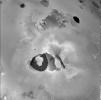
|
-
PIA00375:
-
Io - Volcano Loki and Loki Patera
Full Resolution:
TIFF
(517.3 kB)
JPEG
(51.9 kB)
|

|
1996-09-26 |
Dione
|
Voyager
|
VG ISS - Narrow Angle
|
1200x1180x1 |
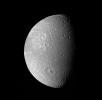
|
-
PIA00028:
-
Dione Mosaic
Full Resolution:
TIFF
(517.1 kB)
JPEG
(91.32 kB)
|

|
1996-09-26 |
Jupiter
|
Voyager
|
VG ISS - Narrow Angle
|
500x500x3 |
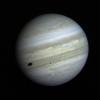
|
-
PIA00455:
-
Jupiter with Io Crossing
Full Resolution:
TIFF
(412 kB)
JPEG
(15.15 kB)
|

|
1996-09-26 |
Jupiter
|
Voyager
|
Imaging Science Subsystem
|
400x400x3 |
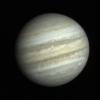
|
-
PIA00029:
-
First Close-up Image of Jupiter from Voyager 1
Full Resolution:
TIFF
(280.8 kB)
JPEG
(10.37 kB)
|

|
1996-09-26 |
Jupiter
|
Voyager
|
VG ISS - Narrow Angle
|
600x600x3 |
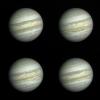
|
-
PIA00454:
-
Early Voyager 1 Images of Jupiter
Full Resolution:
TIFF
(491.5 kB)
JPEG
(21.78 kB)
|

|
1996-09-13 |
Earth
|
Voyager
|
VG ISS - Narrow Angle
|
620x500x3 |
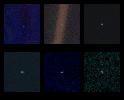
|
-
PIA00453:
-
Solar System Portrait - Views of 6 Planets
Full Resolution:
TIFF
(530.3 kB)
JPEG
(33.82 kB)
|

|
1996-09-13 |
Sol (our sun)
|
Voyager
|
VG ISS - Wide Angle
|
4000x1200x3 |

|
-
PIA00451:
-
Solar System Portrait - 60 Frame Mosaic
Full Resolution:
TIFF
(1.124 MB)
JPEG
(166.4 kB)
|

|
1996-09-13 |
Sol (our sun)
|
Voyager
|
VG ISS - Wide Angle
|
3430x2650x3 |
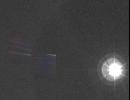
|
-
PIA00450:
-
Solar System Portrait - View of the Sun, Earth and Venus
Full Resolution:
TIFF
(8.676 MB)
JPEG
(515.8 kB)
|

|
1996-09-12 |
Earth
|
Voyager
|
VG ISS - Narrow Angle
|
453x614x3 |

|
-
PIA00452:
-
Solar System Portrait - Earth as 'Pale Blue Dot'
Full Resolution:
TIFF
(698 kB)
JPEG
(30.18 kB)
|

|
1996-08-12 |
Callisto
|
Voyager
|
VG ISS - Narrow Angle
|
2000x2000x3 |
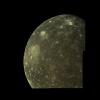
|
-
PIA00080:
-
Callisto Mosaic
Full Resolution:
TIFF
(5.114 MB)
JPEG
(252.5 kB)
|

|
1996-07-17 |
Ganymede
|
Voyager
|
VG ISS - Narrow Angle
|
460x780x1 |

|
-
PIA00354:
-
Ganymede at 87,000 miles
Full Resolution:
TIFF
(218.7 kB)
JPEG
(115.5 kB)
|

|
1996-07-17 |
Ganymede
|
Voyager
|
VG ISS - Narrow Angle
|
300x300x1 |
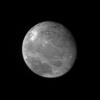
|
-
PIA00351:
-
Ganymede at 2.6 million miles
Full Resolution:
TIFF
(33.81 kB)
JPEG
(4.17 kB)
|

|
1996-07-17 |
Ganymede
|
Voyager
|
VG ISS - Narrow Angle
|
300x300x3 |
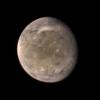
|
-
PIA00352:
-
Ganymede at 3.4 million miles
Full Resolution:
TIFF
(133.4 kB)
JPEG
(5.592 kB)
|

|
1996-03-13 |
Jupiter
|
Voyager
|
VG ISS - Narrow Angle
|
1000x1000x3 |
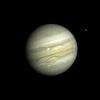
|
-
PIA00235:
-
Jupiter with Satellite Io
Full Resolution:
TIFF
(1.226 MB)
JPEG
(37.26 kB)
|

|
1996-02-01 |
Jupiter
|
Voyager
|
VG ISS - Narrow Angle
|
895x848x3 |
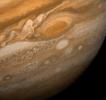
|
-
PIA00014:
-
Jupiter Great Red Spot
Full Resolution:
TIFF
(1.502 MB)
JPEG
(56.12 kB)
|

|
1996-01-29 |
Jupiter
|
Voyager
|
VG ISS - Narrow Angle
|
820x540x3 |
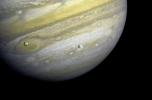
|
-
PIA00144:
-
Jupiter with Satellites Io and Europa
Full Resolution:
TIFF
(821.7 kB)
JPEG
(31.32 kB)
|

|
1996-01-29 |
Io
|
Voyager
|
VG ISS - Narrow Angle
|
1000x1000x3 |
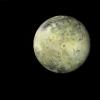
|
-
PIA00023:
-
Io - Full Disk
Full Resolution:
TIFF
(1.21 MB)
JPEG
(40.95 kB)
|

|
1996-01-29 |
Jupiter
|
Voyager
|
Imaging Science Subsystem
|
896x928x3 |

|
-
PIA00018:
-
Exaggerated Color View of the Great Red Spot
Full Resolution:
TIFF
(1.933 MB)
JPEG
(135.2 kB)
|

|
1996-01-29 |
Jupiter
|
Voyager
|
VG Imaging Science Subsystem
|
940x886x3 |

|
-
PIA00015:
-
Large Brown Oval
Full Resolution:
TIFF
(1.991 MB)
JPEG
(54.79 kB)
|

 Planetary Data System
Planetary Data System


































